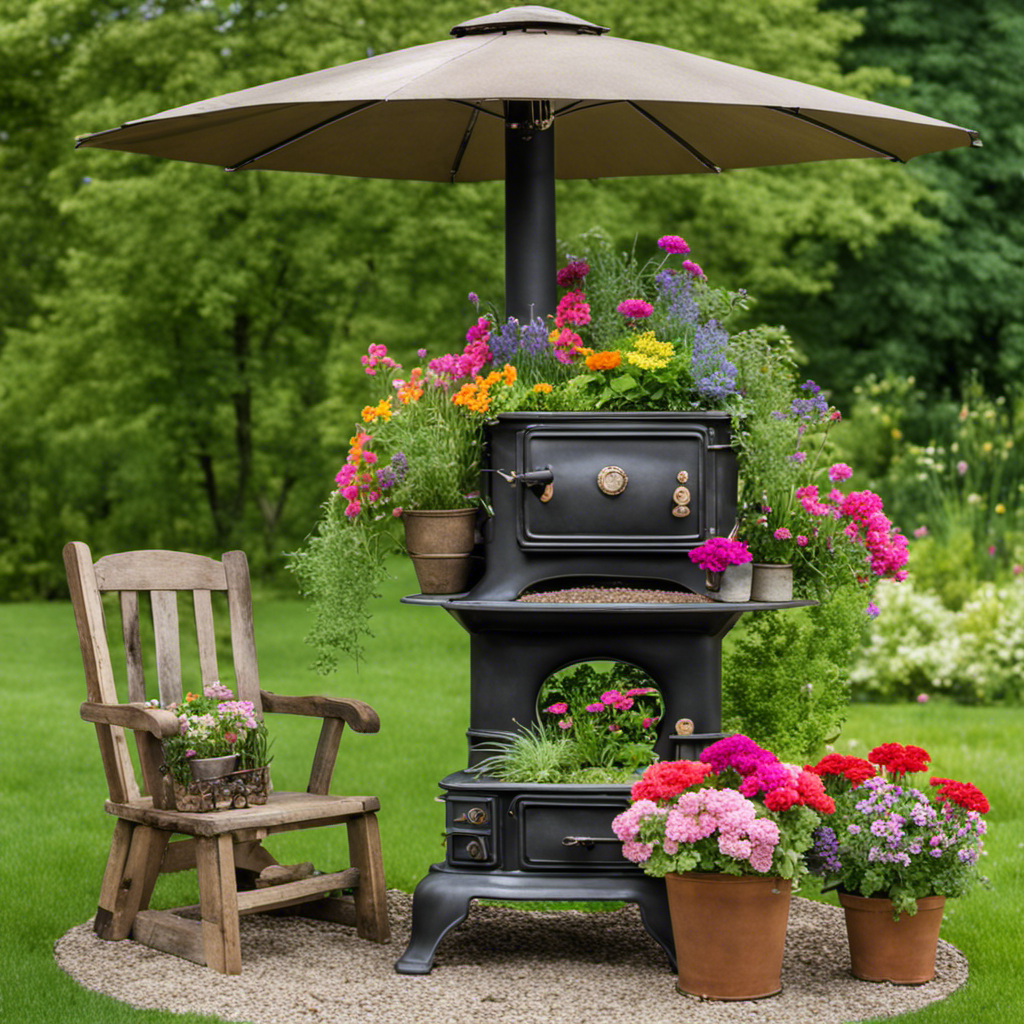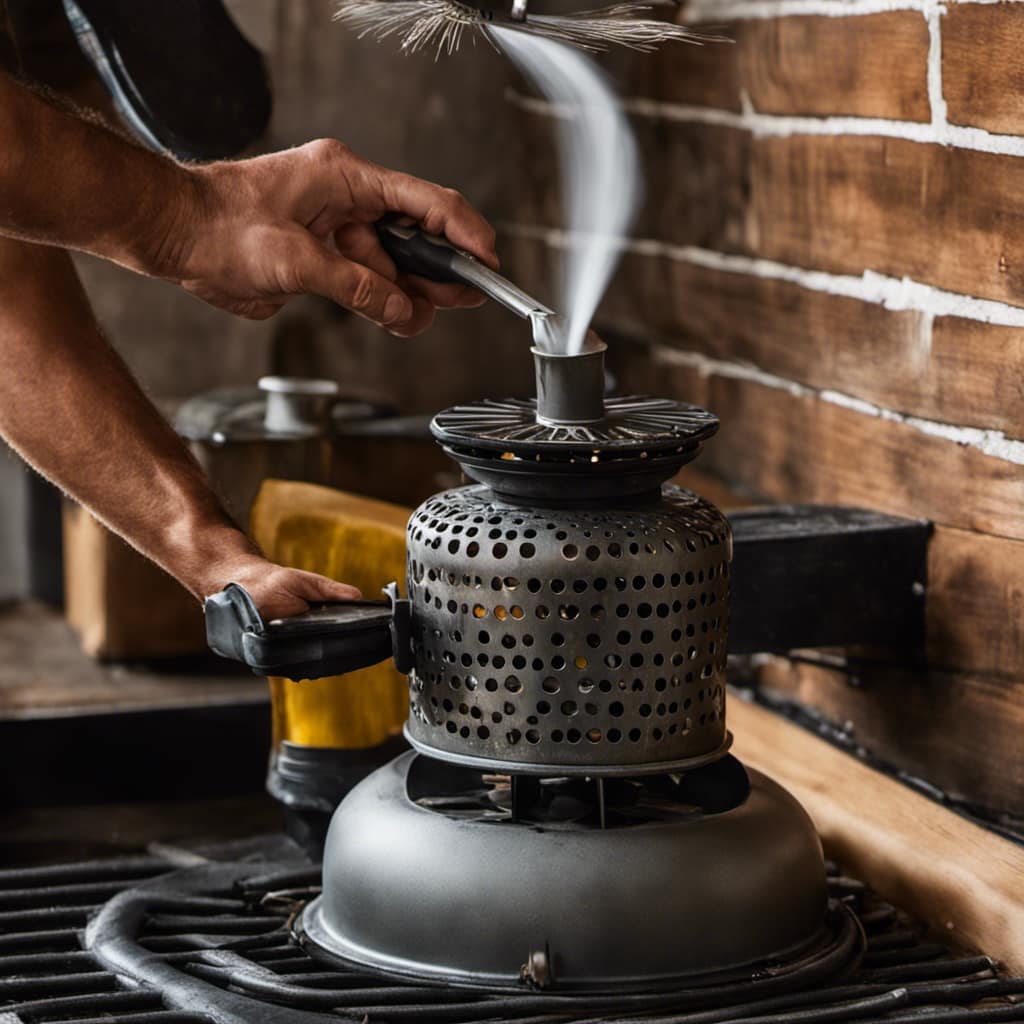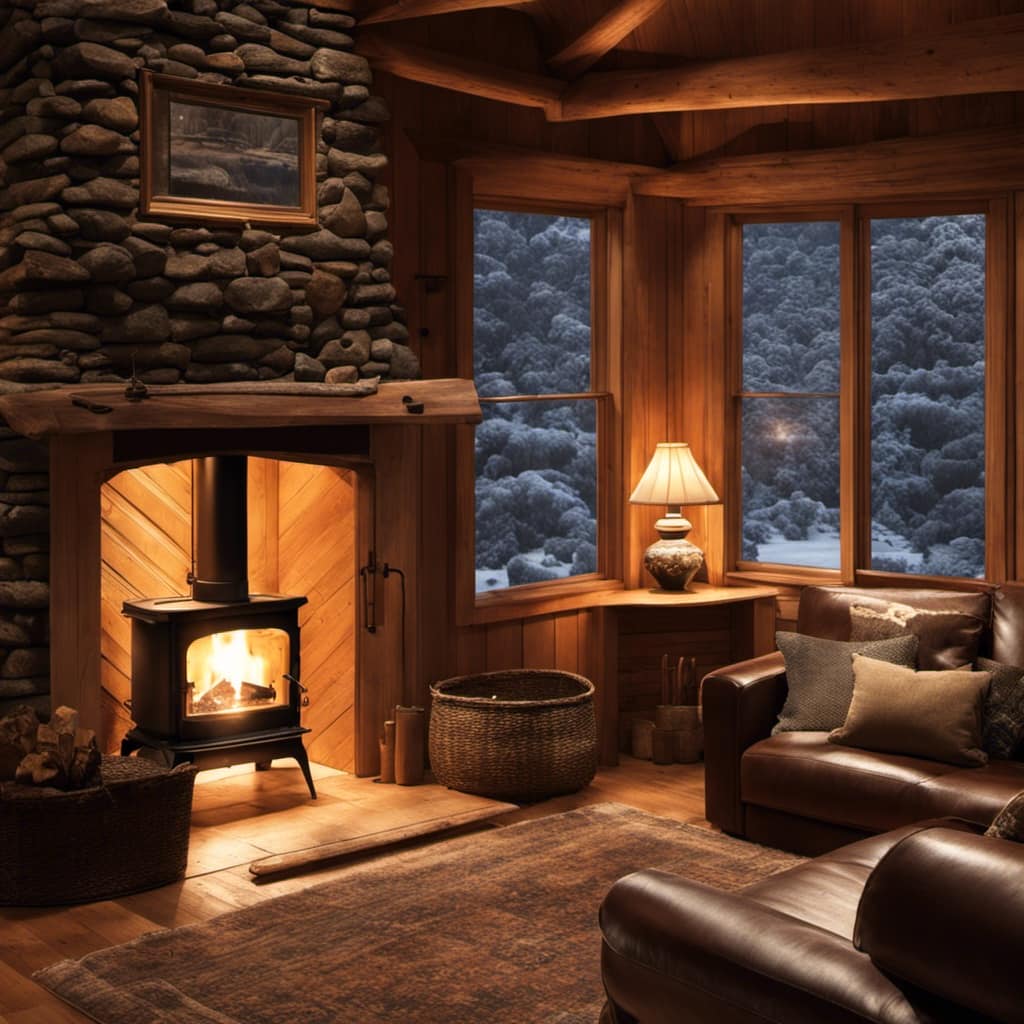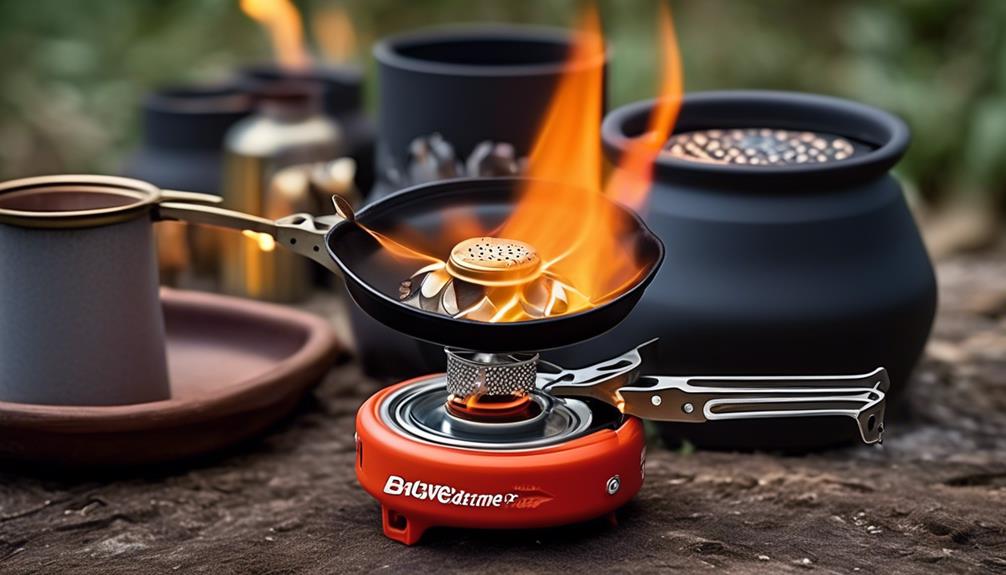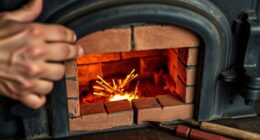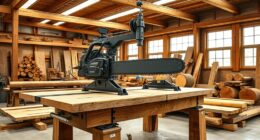As someone who has a lot of experience with wood stoves, I have learned how to maximize their potential for heating. Come with me as we explore choosing the best wood, perfecting the art of building a strong fire, and improving airflow and draft.
With my expert tips on maintenance, cleaning, and heat distribution, you’ll be able to cozy up to the warm embrace of your wood stove like never before. Get ready to experience the true magic of this rustic heating marvel.
Key Takeaways
- Choose wood with low moisture content for efficient burning and maximum heat output.
- Regularly clean the chimney and keep the damper fully open for efficient combustion.
- Schedule regular chimney inspections for proper ventilation and issue identification.
- Enhancing heat distribution through furniture arrangement, reflective panels, cleaning, insulation, and using fans improves overall heating efficiency.
Proper Wood Selection
I always make sure to choose the right type of wood for my wood stove to ensure efficient burning and maximum heat output. One of the key factors in selecting the right wood is its moisture content.
Wood needs to be properly seasoned before it can be used in a wood stove. Seasoning involves allowing the wood to dry out naturally, usually for at least six months to a year. This process reduces the moisture content, making the wood burn more efficiently and produce more heat.
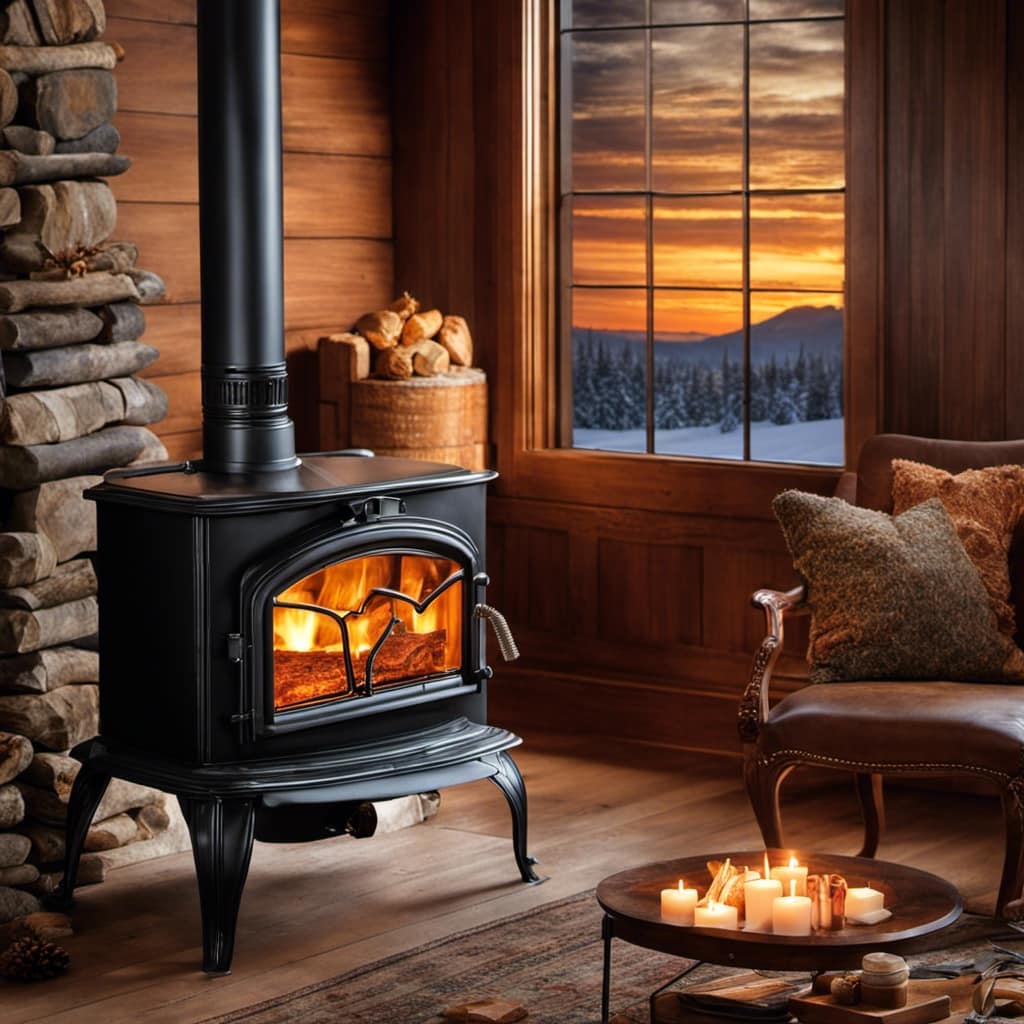
Wood with high moisture content not only burns less efficiently but also creates more smoke, leading to creosote buildup in the chimney. I always check the moisture content of the wood I use, aiming for a moisture content of around 20%.
This ensures a clean, hot burn and maximizes the performance of my wood stove.
Efficient Fire Building Techniques
Using the right fire building techniques ensures that the wood in my stove burns efficiently and produces maximum heat. One of the key factors in achieving this is proper firewood storage.
It’s important to store firewood in a dry and well-ventilated area. This helps to reduce moisture content in the wood, allowing it to burn more efficiently. Moisture in firewood not only reduces its heat output but also leads to increased creosote buildup in the stove and chimney.
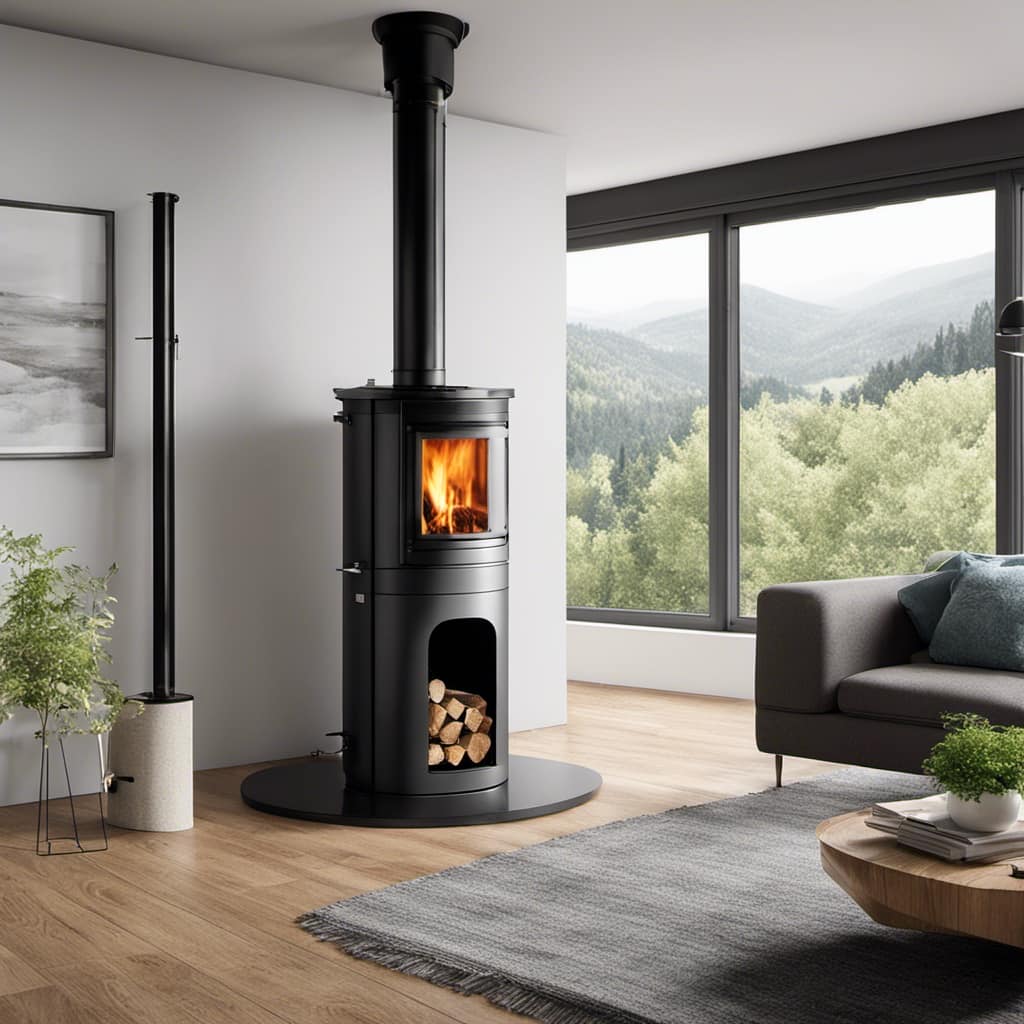
Creosote is a highly flammable substance that can cause chimney fires if not properly managed. To minimize creosote buildup, it’s essential to burn dry and seasoned wood. Additionally, building a fire with smaller pieces of wood placed tightly together helps to create a hotter and more efficient burn, reducing the formation of creosote.
Optimizing Airflow and Draft
To optimize the airflow and draft in my wood stove, it’s important to regularly clean the chimney and make sure the damper is fully open. This ensures efficient combustion and prevents smoke from entering the room.
However, there are additional steps that can be taken to further improve the performance of a wood stove. One such step is improving insulation around the stove and chimney. By sealing any gaps or leaks, heat loss can be minimized, allowing the stove to maintain a higher temperature and produce more heat.
Another effective method is using heat reflectors. These reflective panels can be placed behind the stove to redirect heat into the room, instead of being absorbed by the wall.

By implementing these strategies, you can maximize the efficiency and effectiveness of your wood stove.
Now, let’s move on to some maintenance and cleaning tips.
Maintenance and Cleaning Tips
Regular maintenance and thorough cleaning are essential to keep your wood stove operating efficiently and prevent any potential fire hazards. As an experienced wood stove owner, I understand the importance of taking care of this valuable heating appliance.
Here are some tips to help you maintain and clean your wood stove effectively:
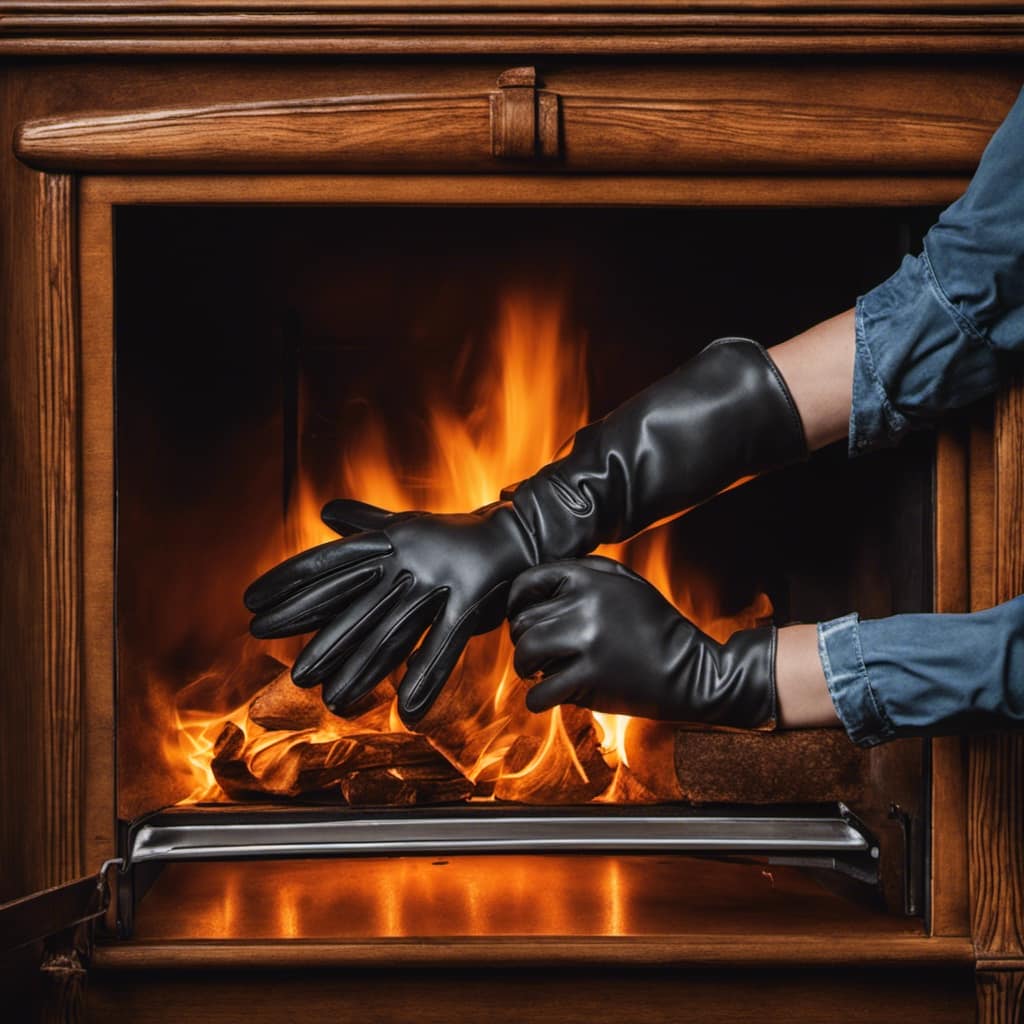
- Schedule regular chimney inspections to ensure proper ventilation and identify any potential issues.
- Remove creosote buildup from the chimney to prevent chimney fires and maintain a clear passage for smoke.
- Clean the ash and debris from the stove regularly to maintain optimal performance and prevent blockages.
By following these maintenance and cleaning tips, you can enjoy the warmth and comfort of your wood stove while ensuring its safe and efficient operation.
Don’t neglect this important aspect of wood stove ownership; a well-maintained stove is a happy and safe stove.
Enhancing Heat Distribution
I’ve found that rearranging the furniture around my wood stove has greatly enhanced its heat distribution throughout the room. By strategically positioning my couch, chairs, and coffee table, I have created a more efficient flow of warm air. Heat circulation is crucial in maximizing the effectiveness of a wood stove, as it ensures that every corner of the room benefits from the warmth. To further improve heat retention, I have also placed a heat-resistant reflective panel behind the stove. This simple addition helps to prevent heat loss by reflecting the warmth back into the room. Additionally, I make sure to regularly clean and maintain my wood stove to ensure optimal performance. With these strategies in place, I can enjoy a cozy and evenly heated space during the colder months.
| Strategies for Enhancing Heat Distribution |
|---|
| 1. Rearrange furniture for better air flow |
| 2. Use a heat-resistant reflective panel |
| 3. Clean and maintain the wood stove regularly |
| 4. Ensure proper insulation in the room |
| 5. Consider using a heat-powered fan to circulate the warm air |
Frequently Asked Questions
What Are Some Common Mistakes to Avoid When Selecting Wood for a Wood Stove?
Common mistakes when selecting wood for a wood stove include using wet or green wood, using softwood instead of hardwood, and not properly seasoning the wood. These mistakes can lead to poor performance and increased emissions.
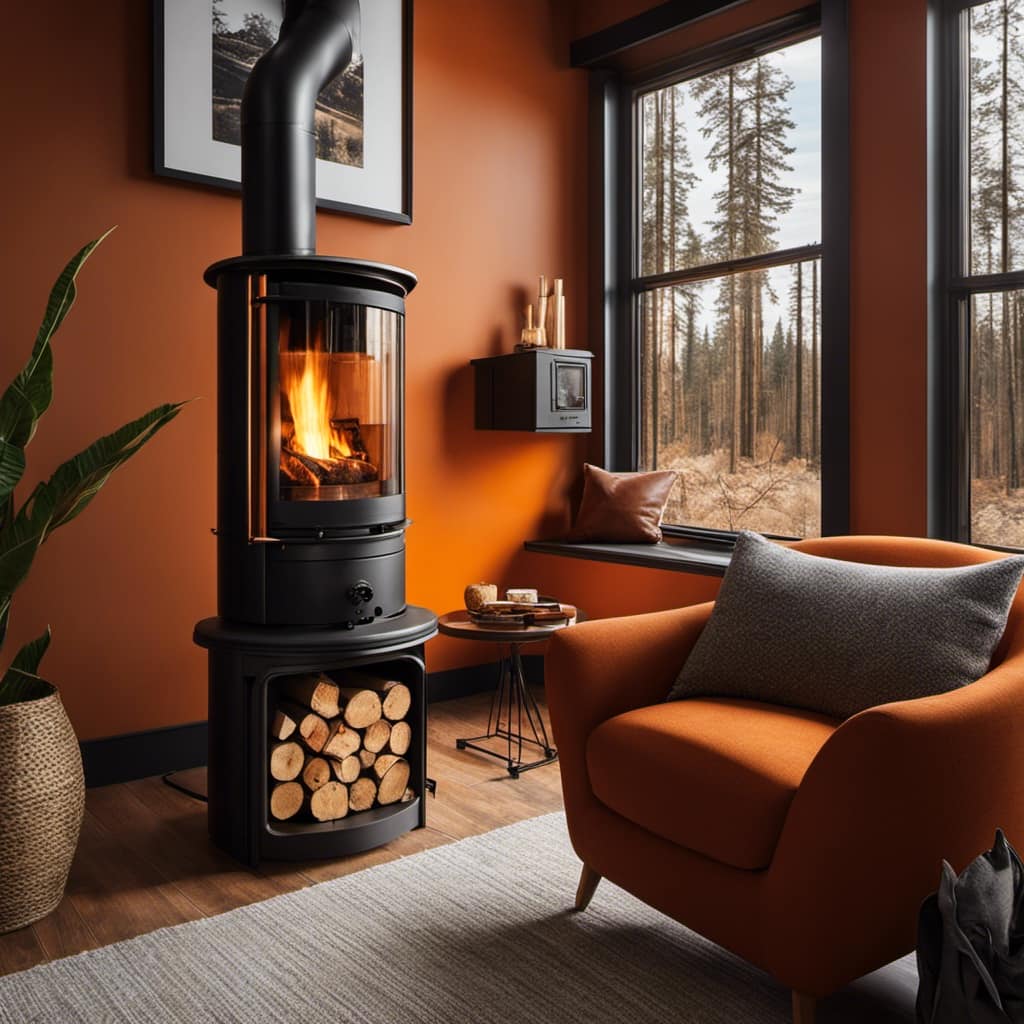
Are There Any Tips for Preventing Smoke From Entering the Room When Starting a Fire in the Wood Stove?
To prevent smoke from entering the room when starting a fire in a wood stove, it’s important to follow these tips: ensure proper ventilation, open the damper fully, and use dry, seasoned wood.
How Often Should the Chimney Be Inspected and Cleaned?
I recommend having your chimney inspected and cleaned at least once a year to ensure optimal performance and reduce the risk of chimney fires. Proper wood selection is also crucial for efficient burning and minimal creosote buildup.
Can I Use Artificial Logs or Treated Wood in a Wood Stove?
I wouldn’t recommend using artificial logs or treated wood in a wood stove. They can produce harmful chemicals when burned. It’s best to stick to natural firewood options to ensure safety and prevent smoke-related issues.
Are There Any Safety Precautions to Follow When Using a Wood Stove to Ensure Proper Heat Distribution Throughout the House?
Safety precautions are essential for proper heat distribution. Check for any obstructions in the stovepipe, use a fire-resistant barrier around the stove, and keep flammable objects away. These steps ensure a safe and efficient wood stove experience.
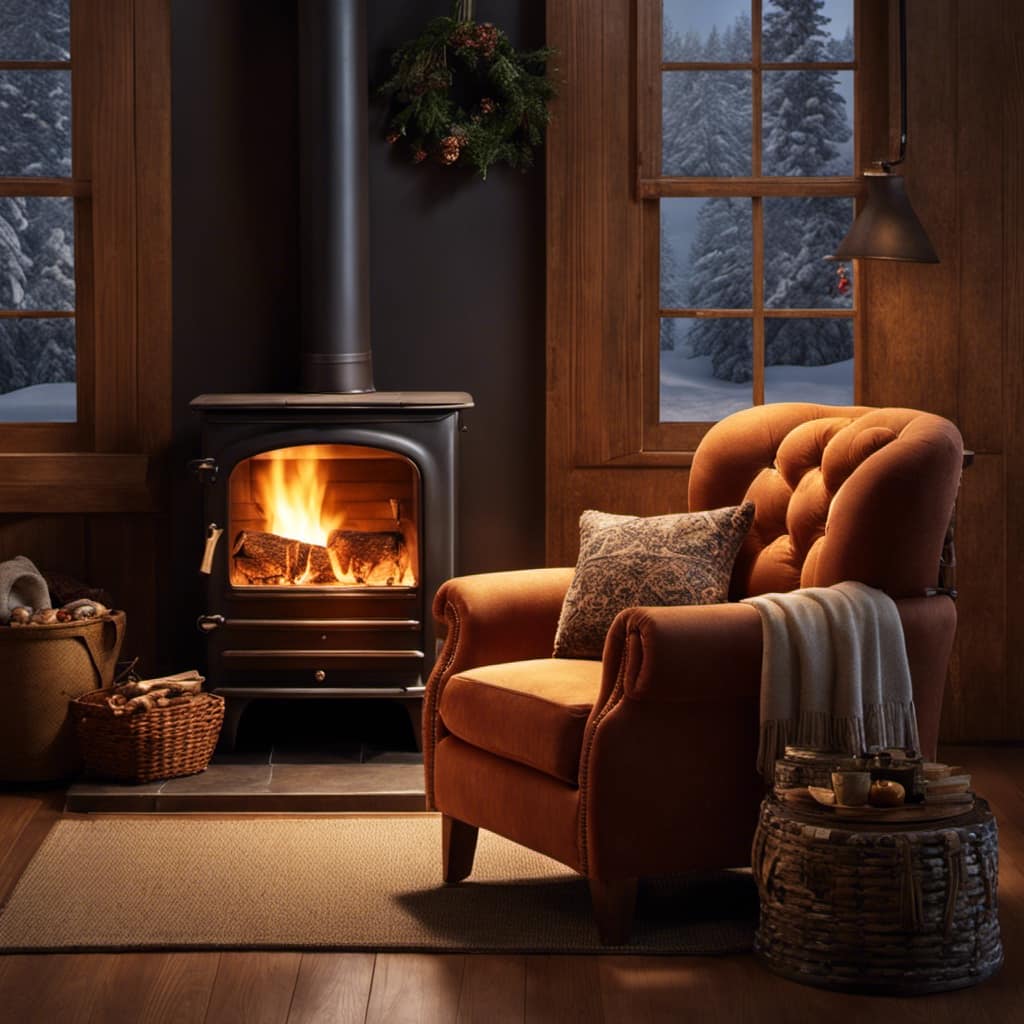
Conclusion
In conclusion, the wood stove isn’t just a source of heat, but a symbol of warmth and comfort.
By following proper wood selection, efficient fire building techniques, optimizing airflow, and regular maintenance, you can maximize the benefits of your wood stove.
As the flames dance and the wood crackles, the cozy ambiance created by the wood stove will envelop your home, providing you with a truly delightful and satisfying experience.
Embrace the beauty and efficiency of your wood stove, and let it bring you the ultimate warmth and relaxation.
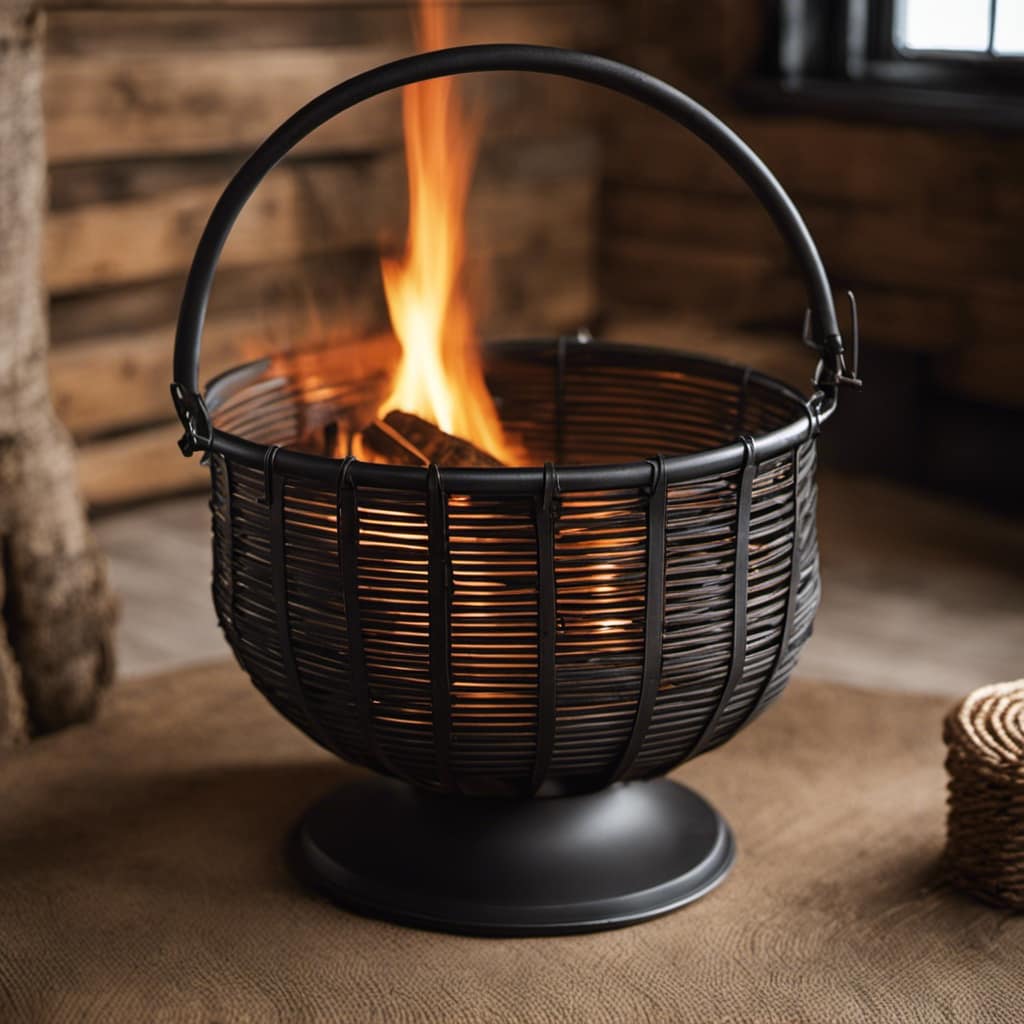
Growing up surrounded by the vast beauty of nature, Sierra was always drawn to the call of the wild. While others sought the comfort of the familiar, she ventured out, embracing the unpredictable and finding stories in the heartbeat of nature.
At the epicenter of every remarkable venture lies a dynamic team—a fusion of diverse talents, visions, and passions. The essence of Best Small Wood Stoves is crafted and refined by such a trio: Sierra, Logan, and Terra. Their collective expertise has transformed the platform into a leading authority on small wood stoves, radiating warmth and knowledge in equal measure.




